





Roadside Safety - Barriers
leaving the road and hitting roadside hazards, including slopes (roadside barriers) crossing into the path of on-coming vehicles (see median barriers ).
Barrier end terminals
Closing short gaps between two sections of the same safety barriers. Closing short gaps between two sections of different safety barriers with a transition. Extending the safety barrier upstream to locations with lower traffic speeds e.g. start of slip roads. Extending the safety barrier upstream of curves and other vulnerable sites.
Extending and flaring the safety barrier to blend in with an upstream slope or anchor to an abutment wall. Adopting crash cushions or end terminals.
If properly designed, installed and maintained, barriers should reduce the severity of crashes involving ‘out of control’ vehicles. When used in the median, safety barriers can greatly reduce the likelihood of head-on crashes.
A safety barrier should only be built if the existing hazard cannot be removed (see Roadside Safety – Hazard Removal). On high volume, high speed divided roads and roads on steep sidelong ground, a continuous safety barrier can be a more appropriate strategy to address continuous downhill side slopes or a high density of hazardous objects. With the use of continuous barriers, adequate consideration should be given to refuge space for stranded vehicles and their occupants. In general, a shoulder width of 4m to 6m (3m minimum) in front of the barrier is desirable or else lay-bys should be provided at regular intervals. Access openings for emergency or maintenance may be provided with the safety barrier in overlapping layout. The end points (terminals or end treatments) of barriers can be dangerous if not properly designed, constructed and maintained (see Related Images for examples of poor terminal treatments). Safety barriers should be located so as to minimize high impact angles and should also allow space for vehicles to pull off the traffic lane. Safety barriers can have adverse implications on conspicuity and visibility at intersections, accesses, pedestrian crossings, etc. The problem is often aggravated around curves and crest profiles. Minor damage can reduce the safety benefits of barriers if they are not properly repaired. Roadside barriers are a hazard to motorcyclists. Ensure appropriate clearance behind safety barrier is considered particularly for flexible and semi-rigid barriers. With concrete barriers although they do not deflect, allowance must be made for any hazards taller than the barrier to be offset far enough from the face of the barrier so that during impact vehicles (particularly high vehicles such as trucks) do not lean over the barrier and strike the hazard If an uphill slope is not available, additional roadside area will need to be created to accommodate a flared barrier end terminal. If a flared safety barrier needs to cross a longitudinal ditch, appropriate detailing will be required to avoid an errant vehicle becoming snagged, under-riding or over-riding the barrier. If a high speed road or interchange is opened in stages, any stub ends should be properly treated.
Treatment Summary
40-60% |
Case Studies
Related Images
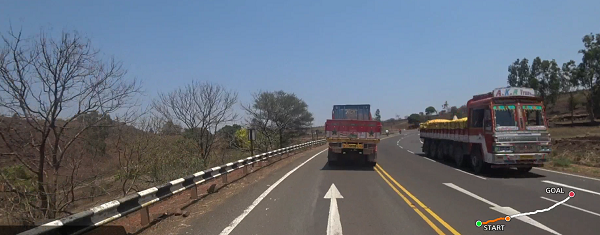
State highway in India with 2+1 lane configuration and roadside safety barrier. Image credit: iRAP 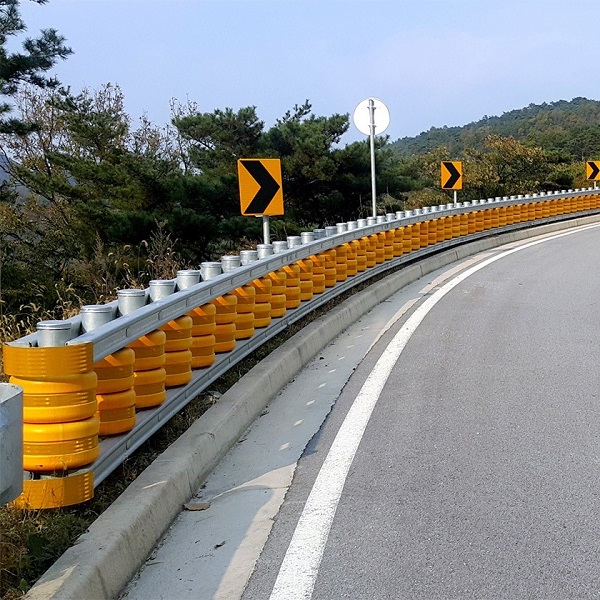
"Roller" safety barrier. Image credit: Unknown 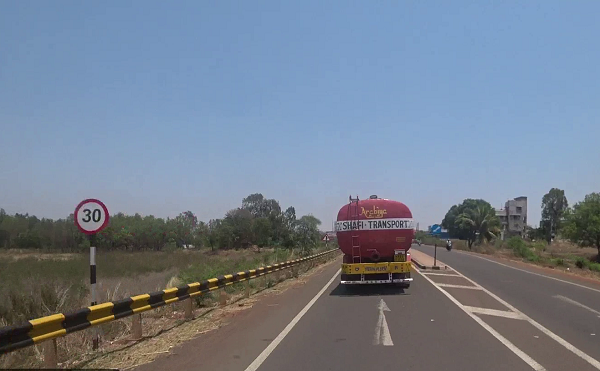
State highway with roadside safety barrier in India Image credit: iRAP 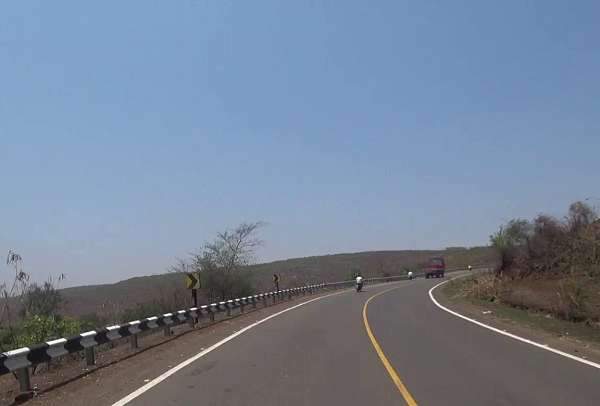
A curve with Chevron alignment markers and roadside barrier in India. This reduces the likelihood and severity of run-off crashes at curves. Image credit: iRAP 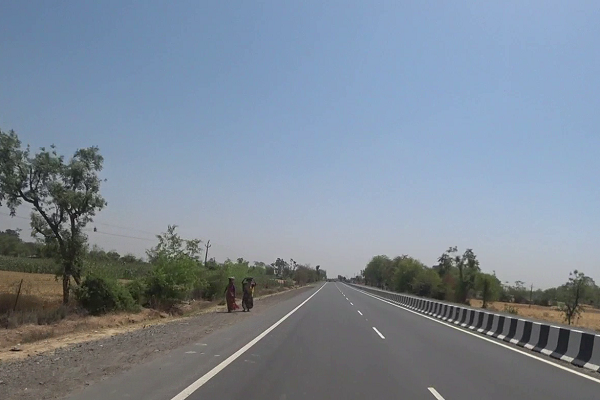
Dual carriageway state highway in India with concrete median barrier. Image credit: iRAP 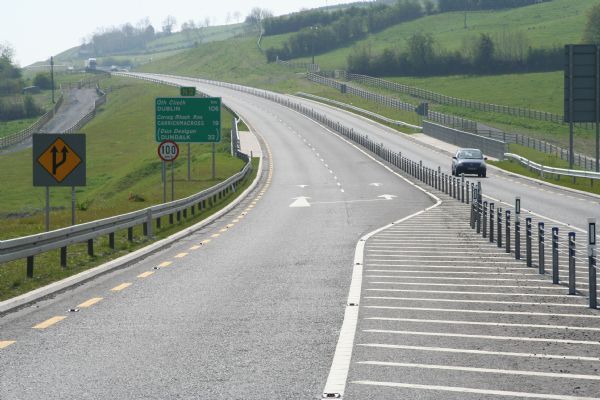
A divided road in Ireland with 2+1 lane configuration and wire-rope median barrier. Image credit: EuroRAP 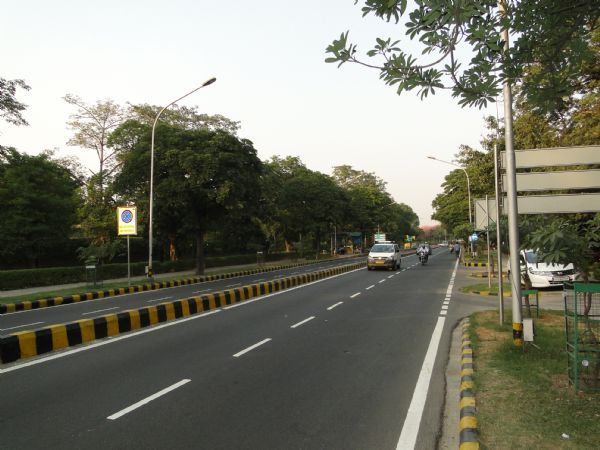
A divided urban road with narrow median in New Delhi, India. Image credit: Greg Smith 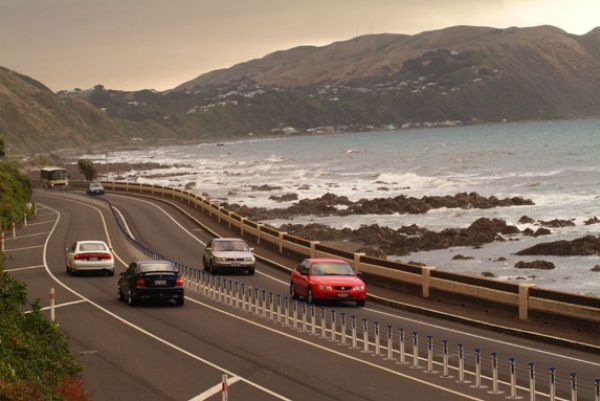
A wire-rope median safety barrier in New Zealand. Image credit: New Zealand Transport Agency 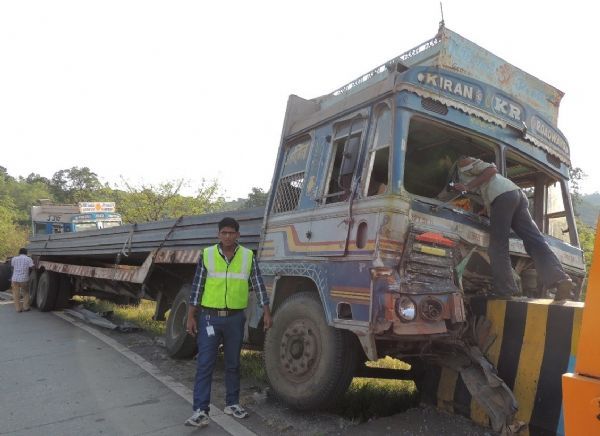
A run-off crash. Barrier end terminals must be designed to minimize risk upon impact. A crash attenuator would be a suitable end treatment in this case. Image credit: JP Research India 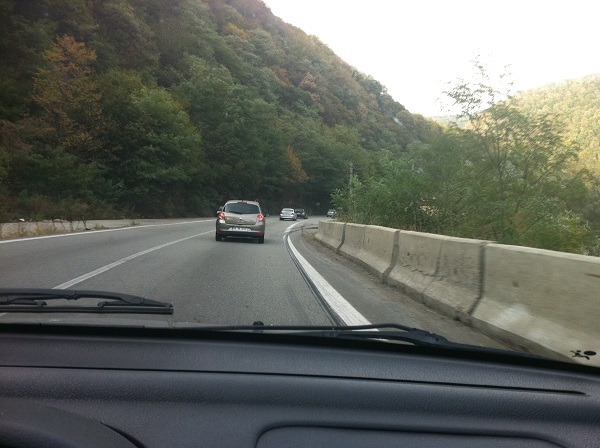
Concrete safety barrier with unconnected segments in Romania. Image credit: Alina Burlacu 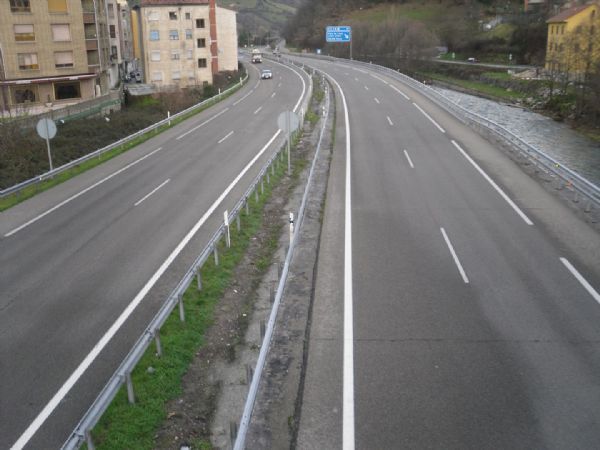
Duplication with median barrier in Asturias, Spain. Image credit: iRAP 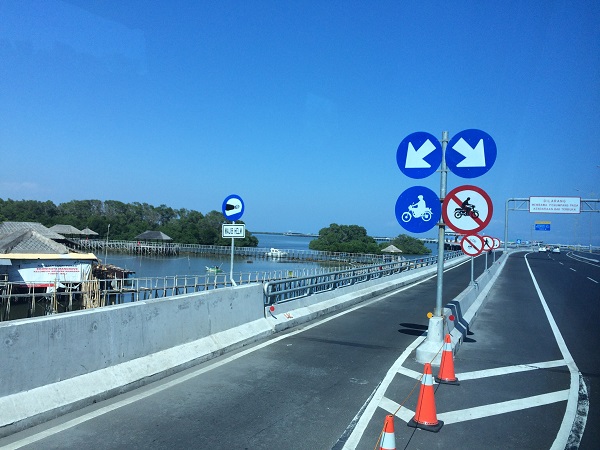
Exclusive motorcycle lane separated by concrete barrier. Image credit: Greg Smith 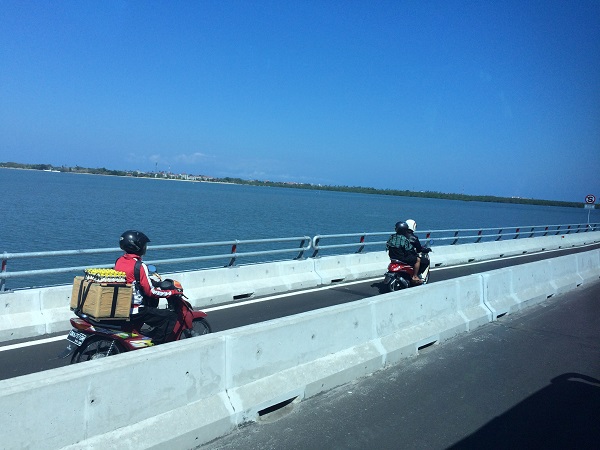
Exclusive motorcycle lane separated by concrete barrier. Image credit: Greg Smith 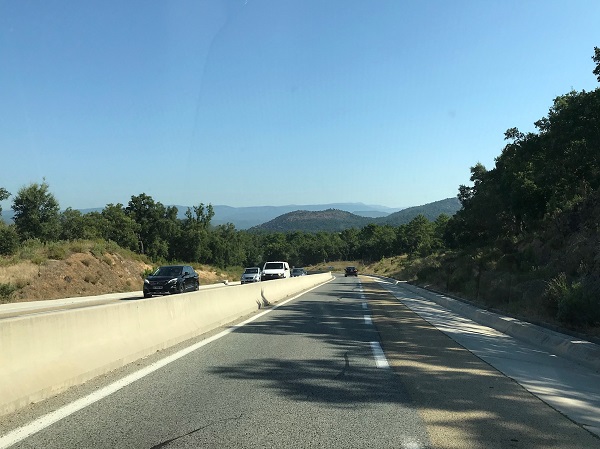
Concrete median barrier in France. Image credit: Unknown 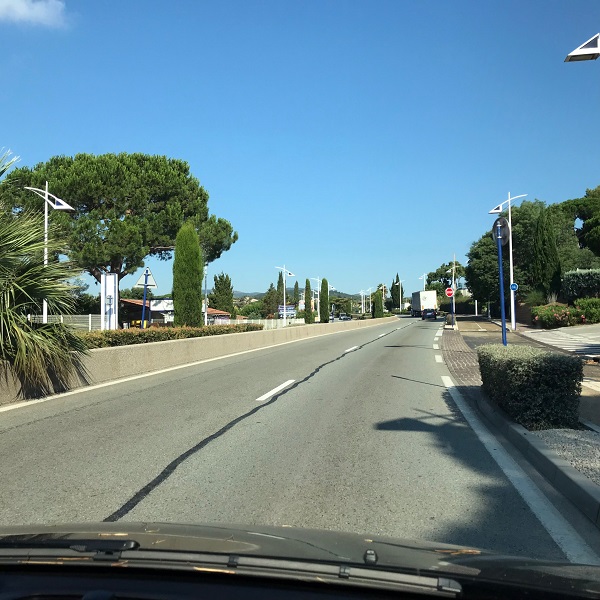
Media barrier in France. Image credit: Unknown 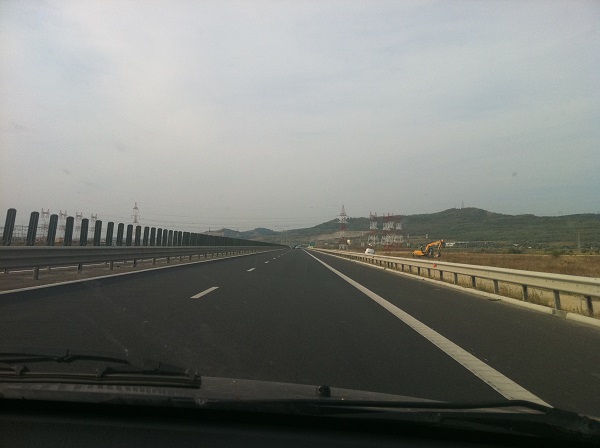
Motorway with safety barriers, wide shoulder and rumble strip edge lines in Romania. Image credit: Alina Burlacu 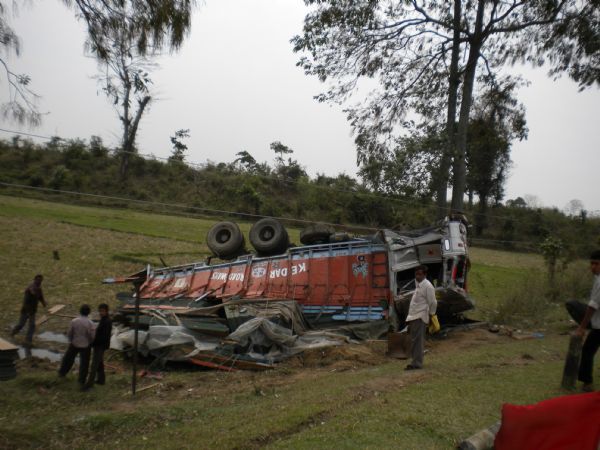
Overturned truck in Assam, India. Image credit: A. Tiwari 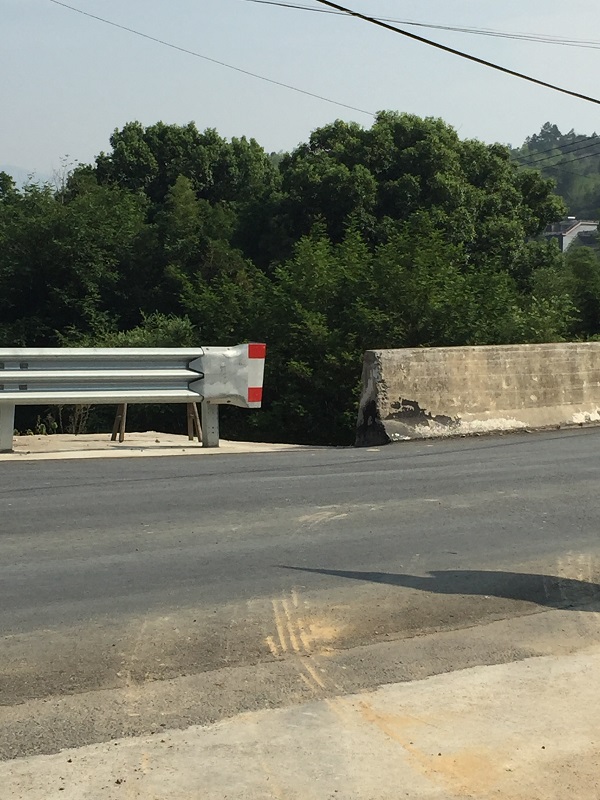
Poor connection between safety barrier and bridge parapet creates a roadside hazard, China. Image credit: Unknown 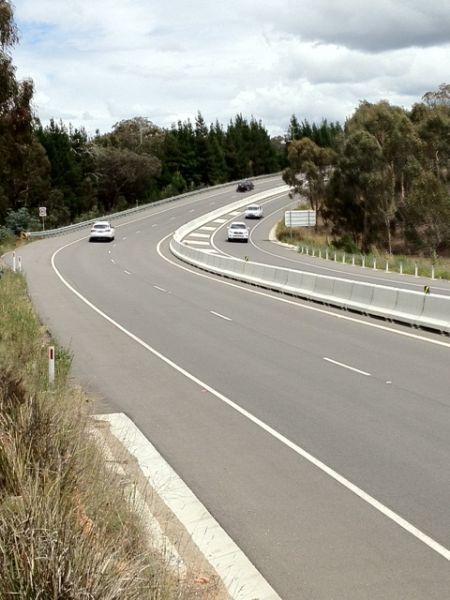
Roadside and median safety barriers on a curve in Australia. Image credit: Greg Smith 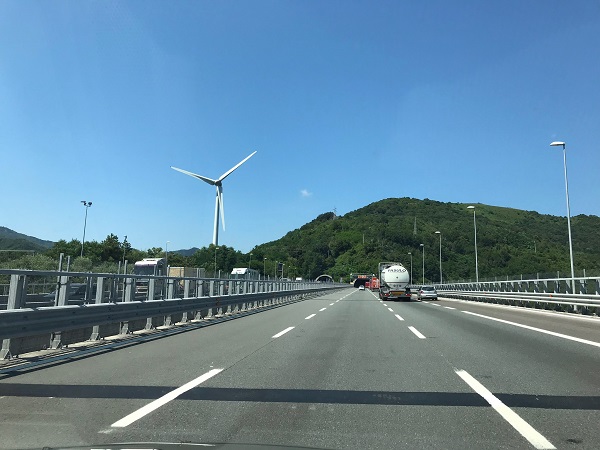
Roadside safety barriers in Switzerland. Image credit: Unknown 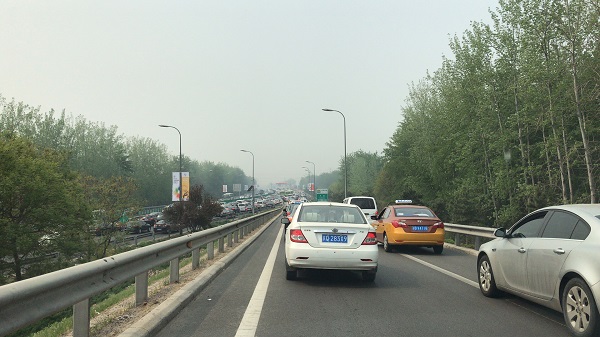
Roadside barrier - Beijing. Image credit: Unknown 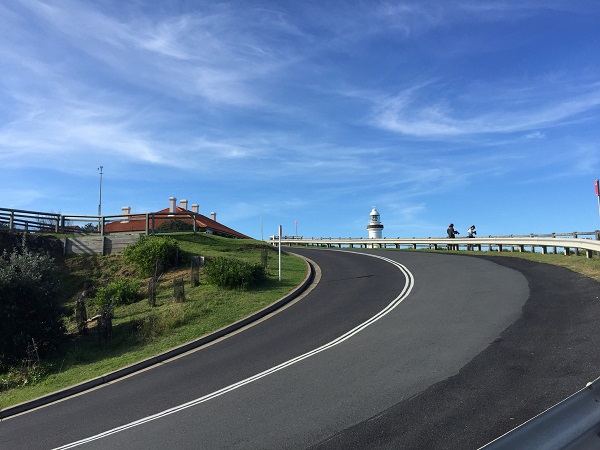
Roadside barrier at curve in Australia. Image credit: Unknown 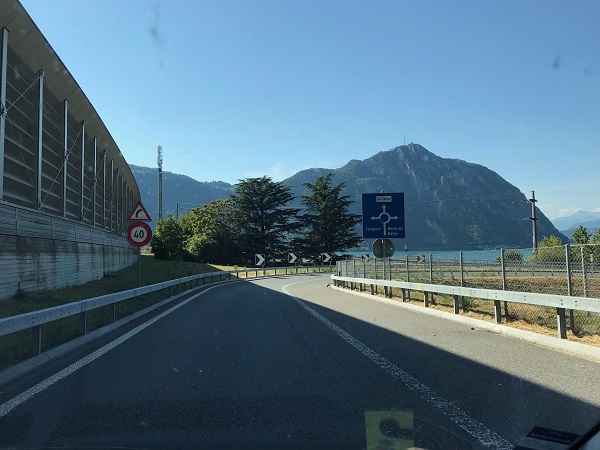
Roadside barrier at curve in Switzerland. Image credit: Unknown 
Safety barrier - Switzerland. Image credit: Unknown 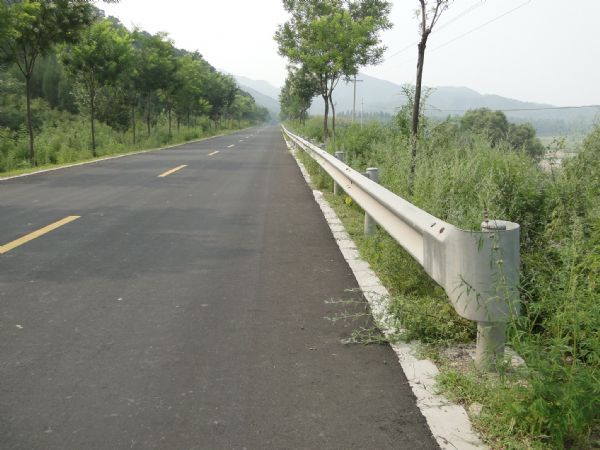
Unprotected safety barrier end in China. This type of end treatments pose high runoff risk. Image credit: Greg Smith 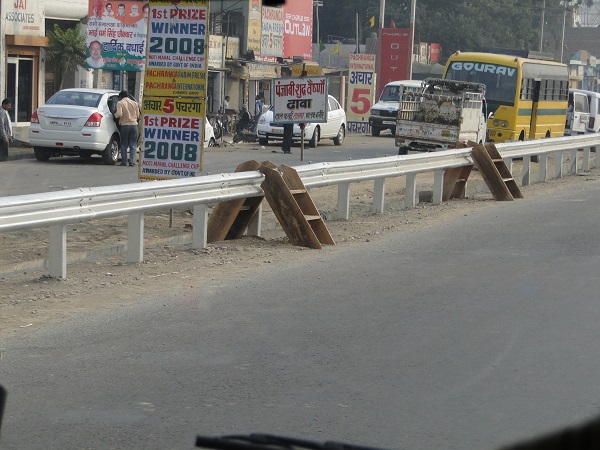
Safety barriers obstructing pedestrian desire line in India. Image credit: Greg Smith 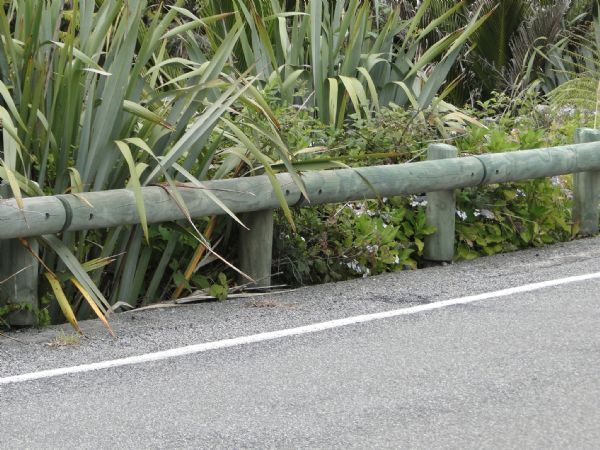
Steel-reinforced timber safety barrier in New Zealand, designed to blend in with the environment. Image credit: iRAP 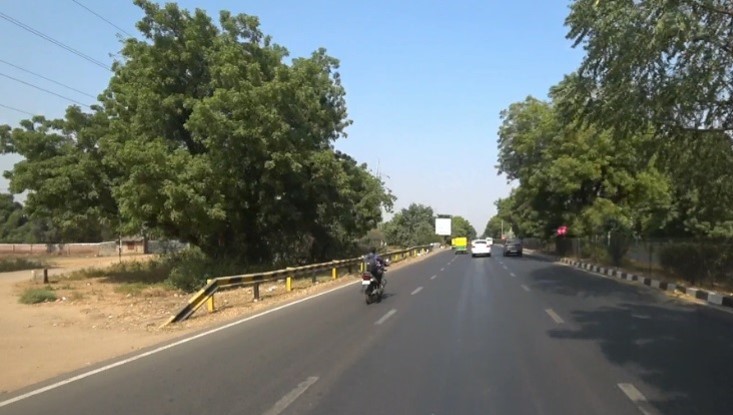
The end points of barriers can be dangerous if not properly designed. Slopped ground mounted crash barrier end presents a risk to vehicles that strike it. Image credit: iRAP










